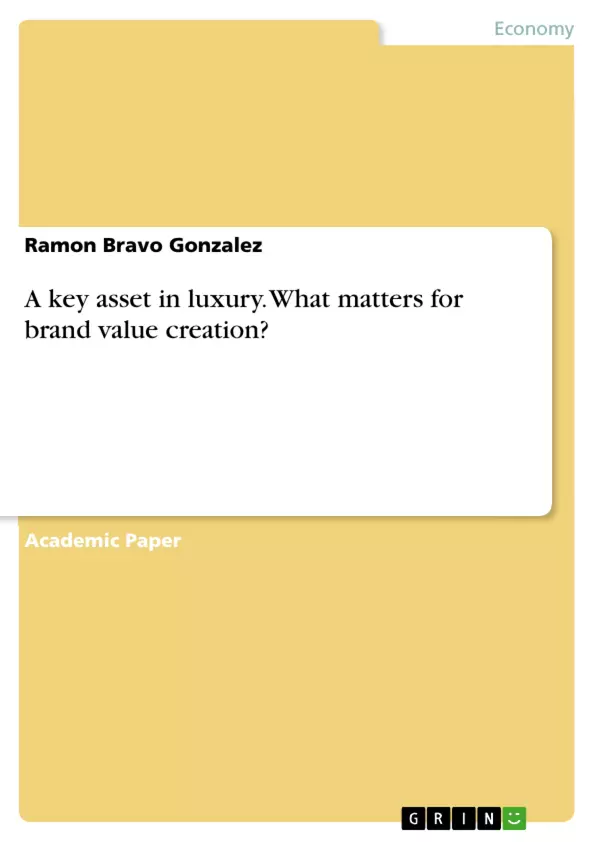This paper seeks to contribute to the existing literature on brand value by identifying the factors that create and preserve brand value in luxury, from both, a consumer and company perspective.
It seeks to advance luxury research by identifying the determinants of BV that are overemphasized and overlooked. Brand value (BV) is a key asset in luxury. Given the current pressures facing the industry, it is essential to know which consumer- and company-based factors create and preserve BV in luxury.
This paper seeks to answer two research questions:
1. What are the most important determinants of BV from the luxury industry’s perspective?
2. What are the most important company- and consumer-based BV determinants within luxury?
To conduct the analysis, the author adapts Keller and Lehmann’s Value Chain into a luxury context and then analyzes it statistically using linear modelling (lm). For the statistical analysis, the author builds a dataset using consumer data provided by BAV consulting and complement it with secondary sources including Bloomberg, CSRHub, Dow Jones Sustainability Index (DJSI), Interbrand and company reports.
The results are then subject to expert validation with senior executives and stakeholders from the luxury industry (‘credibility checks’).
Inhaltsverzeichnis (Table of Contents)
- Introduction
- Chapter 1: The History of Education
- Chapter 2: The Impact of Technology on Education
- Chapter 3: The Future of Education
Zielsetzung und Themenschwerpunkte (Objectives and Key Themes)
This book aims to provide a comprehensive overview of the evolution of education, exploring its historical roots, the influence of technological advancements, and the potential future directions it may take. It delves into the fundamental principles and practices that have shaped education throughout history, analyzing how technological innovations have transformed learning environments and student experiences.
- Historical Development of Education
- Role of Technology in Modern Education
- Challenges and Opportunities for the Future of Education
- The Impact of Globalization on Education
- Equity and Access in Education
Zusammenfassung der Kapitel (Chapter Summaries)
Chapter 1 delves into the historical evolution of education, tracing its roots from ancient civilizations to modern times. It explores key milestones, influential thinkers, and the various pedagogical approaches that have shaped educational practices throughout history.
Chapter 2 examines the transformative influence of technology on education. It discusses the emergence of new learning tools, the rise of online education, and the impact of digital technologies on pedagogical approaches and student engagement.
Chapter 3 looks towards the future of education, considering the challenges and opportunities presented by evolving social, technological, and economic forces. It explores potential trends, innovations, and the critical role education will play in shaping a future driven by technological advancements and global interconnectedness.
Schlüsselwörter (Keywords)
Education, History, Technology, Innovation, Globalization, Equity, Access, Future Trends, Learning Environments, Digital Technologies, Pedagogy, Curriculum.
- Arbeit zitieren
- Ramon Bravo Gonzalez (Autor:in), 2021, A key asset in luxury. What matters for brand value creation?, München, GRIN Verlag, https://www.hausarbeiten.de/document/1271551


